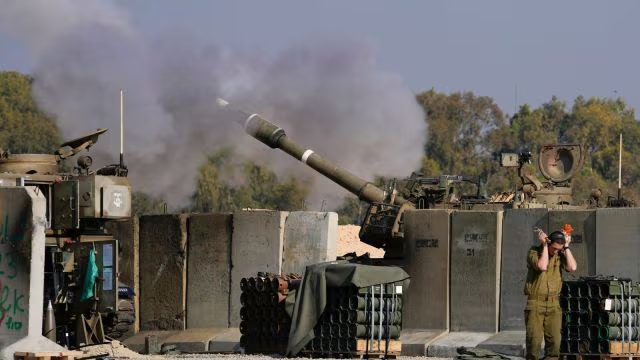Iran Israel News:
June 13, 2025
In a dramatic escalation of regional tensions, Israel launched a large-scale military operation targeting Iran’s nuclear program and military leadership early Friday morning. The strikes, which officials described as the most direct attack on Iran’s nuclear infrastructure in over a decade, have sent shockwaves through the region and drawn international condemnation.
Timing and Targets of the Strikes
Explosions rocked Tehran at approximately 03:30 local time (01:00 BST), with residents reporting blasts in residential areas and northeast of the capital. Hours later, a significant explosion was reported at the Natanz nuclear facility, located roughly 225 kilometers (140 miles) south of Tehran. The Israeli Defense Forces (IDF) later confirmed targeting dozens of military and nuclear sites across Iran, with the Natanz complex—home to thousands of centrifuges—suffering substantial damage.
Casualties and Impact
The attack resulted in the deaths of several high-ranking Iranian officials, including Hossein Salami, chief of the Islamic Revolutionary Guard Corps (IRGC), another senior IRGC commander whose name has not been released, and at least two prominent nuclear scientists involved in uranium enrichment. Iranian state media also reported civilian casualties, including children, though these claims have not been independently verified.
Military and Political Fallout
Israel’s operation, codenamed “Operation Rising Lion,” was framed by Prime Minister Benjamin Netanyahu as a preemptive strike to counter an imminent Iranian nuclear threat. Netanyahu warned that Iran could produce a nuclear weapon “within days” and vowed to continue the campaign as long as necessary.
In response, Iran’s Supreme Leader Ayatollah Ali Khamenei warned Israel to “anticipate a severe punishment,” while Foreign Minister Abbas Araghchi labeled the attack a “declaration of war.” Iran declared a state of national mourning and launched approximately 100 drones toward Israel, most of which were intercepted by the IDF.

International Reactions and Safety Concerns
The United States stated it was not involved in the operation, though former President Donald Trump acknowledged prior knowledge of Israel’s plans. The International Atomic Energy Agency (IAEA) confirmed it had been notified by Iranian authorities and reported no increase in radiation levels at Natanz. However, IAEA Director General Rafael Grossi condemned the attack, warning that military actions against nuclear facilities risk “grave consequences for the people of Iran, the region, and beyond.”
Background: Escalating Nuclear Tensions
The strikes come amid stalled nuclear negotiations between Iran and the US, with the next round of talks scheduled for Sunday. Over the past five years, Iran has accelerated its uranium enrichment program, reducing the “breakout time” needed to produce weapons-grade material. The IAEA estimates that Iran currently possesses enough 60% enriched uranium to potentially manufacture nearly four nuclear warheads if further enriched.
Regional and Global Implications
Both Israel and Iran declared states of emergency, with airspace closures and heightened military readiness. Regional air traffic was disrupted, and neighboring countries, including Jordan, reported intercepting missiles and drones over their territory. The situation remains highly volatile, with fears of further escalation and broader regional conflict.
Key Nuclear Facilities at Risk
- Natanz: The primary uranium enrichment site, recently targeted by Israeli airstrikes.
- Fordow: A heavily fortified underground facility near Qom, housing advanced centrifuges.
- Isfahan: A multi-purpose nuclear complex for uranium conversion.
- Khondab (Arak): A heavy water reactor with potential plutonium production capabilities.
- Tehran Research Reactor: Used for academic and medical purposes, but also a training ground for nuclear scientists.
- Bushehr: Iran’s only operational civilian nuclear power plant, powered by Russian-supplied fuel.
Looking Ahead
As the international community calls for restraint, the risk of further military confrontation looms large. The attack marks a significant escalation in the long-standing shadow war between Israel and Iran, with potential repercussions for global security and nuclear non-proliferation efforts.
Reports from multiple sources confirm that the Israel Defense Forces (IDF) targeted dozens of military and nuclear sites across Iran, with the Natanz complex suffering significant damage. The Iran Israel News coverage highlights the deaths of several high-ranking Iranian officials, including Hossein Salami, chief of the Islamic Revolutionary Guard Corps (IRGC), and at least two prominent nuclear scientists.
The latest Iran Israel News also details the regional and international response, with both Israel and Iran declaring states of emergency and closing their airspace. The International Atomic Energy Agency (IAEA) has been closely monitoring developments, stressing the importance of nuclear safety and restraint.
As the Iran Israel News unfolds, the global community watches closely, concerned about the broader implications for security and stability in the Middle East.











](https://i0.wp.com/nirbhidjanmat.com/wp-content/uploads/2025/06/SJaishankar.jpg?resize=75%2C75&ssl=1)




























](https://i0.wp.com/nirbhidjanmat.com/wp-content/uploads/2025/06/SJaishankar.jpg?resize=360%2C180&ssl=1)











